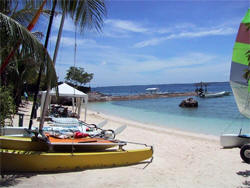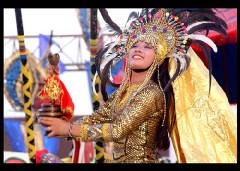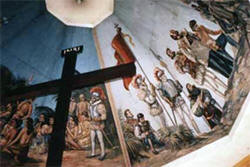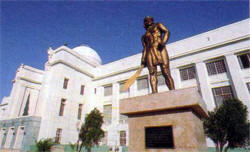�

�
About OutsourceIT2philippines
- Outsourceit2philippines.com is a subsidiary company of Hubport Interactive Inc.
- The OIT2P team evaluates clients' businesses and identifies what kind of Internet presence they need.
- The OIT2P Management Team has significant professional management experience
- Our seven servers are located in two state-of-the-art data centers in Houston, Texas

�



Location/Geographical Highlights:
The province is part of the Central Visayas Region, situated 584 kms. (365 miles) south of Manila. It is bounded on the east by the Camotes Sea, on the west by the Tanon Strait, on the north by the Visayan Sea and on the southeast by the Bohol Strait.
Topography: Predominantly rugged & mountainous with its highest peak at 1,000 m. above sea level. It is elongated; approximately 250 km. long. Its widest point is 45 km.
Land Area : 508,839 hectares (5,088.4 sq. km)
Certified Alienable and Disposable Land : 253,341
Agricultural Products : Corn, rice, legumes, fruit trees, root crops, ornamental plants, coffee, cacao and spices
Population: 2.85 M Cebu Province; 1.5 M Metro Cebu or 53% of the island (NSO data as of 1995)
Languages : Cebuano (spoken by 98% of population), Tagalog, English & Chinese (Fookien & Mandarin)
Dialects : Cebuano is the dialect in the province, which is also widely spoken in the Visayas and Mindanao. Tagalog and English are also spoken and understood.

Climate : Cebu's weather is relatively moderate, having no distinct wet and dry season, the perfect vacation spot for all seasons. One can bask under the sunshine the whole year through since Cebu is blessed with tropical climate. Humidity is 78 percent, warmest temperature is at 189C usually expected during the months of December to February, while the wettest time of the year occurs during November.
Average Annual Rainfall: 1,638.20 mm
Minimum Monthly Rainfall: 50.40 mm
Maximum Monthly Rainfall: 206.50 mm
Mean Temperature Range: 26.49 C - 28.79 C
Minimum Temperature: 22.69 C
Maximum Temperature: 33.19 C

Political Subdivision: The five major cities in Cebu province are Cebu, Mandaue, Lapu-lapu, Danao and Toledo, while there are 48 towns or municipalities. Facing Bohol Strait is the island's capital, Cebu City and historic Mactan Island lies just across the city's harbor. Cebu City is bounded by the City of Mandaue and the Municipality of Consolacion in the north; the city harbor and Bohol Strait in the east; Talisay town in the south and Toledo City in the west. Of the 73 barangays comprising the city, 30 are categorized as mountain barangays with land area totaling 27,797 hectares. There are 6 congressional districts, 3 component cities, namely: Lapu-lapu, Danao and Toledo; 2 highly urbanized cities: Cebu and Mandaue; 48 municipalities; and 1,122 barangays.
History Of the 7,100 islands comprising the Philippines, Cebu has the most historical significance. At the time of the global scramble for exotic spices in the East,a Portuguese navigator sailing for Spain, Fernando Magallanes, came upon Zubu (Cebu) on April 7, 1921 The island then was already a flourishing village with "many sailing vessels from Siam (Thailand), China and Arabia docked at the port" as described by Antonio Pigafetta, Magallanes' chronicler. Then begun the Spanish era in the Philippines. However, it deteriorated upon the death of Magallanes in the hands of the brave local warrior, Lapulapu, only to resurrect with the arrival 44 years later, in 1565, of Miguel Lopez di Legazpi.

Its rich and colorful metamorphosis can be traced from 1521 as Zubu, the fishing village and busy trading port, to Villa San Miguel, later to Villa del Santissimo Nombre de Jesus in 1575, then as the municipality of Cebu in 1905 up to its being a chartered city on February 24, 1937.
In the 19th century, Cebu started to exercise a dominant role in Southern Philippines' economic limelight. Agriculture, especially sugar cane cultivation and sugar manufacturing, pushed Cebu into playing an important role in this part of the country. But even more crucial than the agricultural products was her participation in trade and commerce. Proudly, Cebu has been given the honor as having many 'firsts' in the nation's history. Established by Legazpi in 1571, it became the first city in the Philippines, ante-dating Manila by 7 years. In point of fact, it is the oldest city in the country, having the oldest and smallest fort (Fort San Pedro), with the oldest church (Basilica of Sto. Ni�o), the oldest school (San Carlos) and the oldest street (Colon). Referred to as the Queen City of the South and the seat of early Filipino Christianization, Cebu is also famous for its musical stringed instruments like banduria, guitar and piccolo.
Today, Cebu boasts of being the only city in the Philippines with the perfect blend of a business center and an entertainment hub.
Business and Industry A bustling trade port since pre-Hispanic times, Cebu has maintained its place as the center of trade and commerce in southern Philippines. Farm lands make up 32% of the provincial land area which produce corn, coconut, sugar. rice and mango.

The island is rich in mineral resources, Copper tops the list, Cement is the number on non-metallic mineral, and two big cement factories are located in the province. Other mineral deposits include gold, clay, coal and limestone. Processing plants for coconut oil, rice and corn are concentrated in Metro Cebu (Cebu City, Mandaue City and Lapu-Lapu City), which has become the center of indstrialization in central Philippines. Expansion of labor intensive industries that use local materials includes coal mining; food and fish processing; ship repair; rattan, buri and bamboo furniture; garments and fashion accessories; shellcraft; and electronics. Cebu's thriving economy is boosted by a competitive entrepreneurial climate, an extensive business communications system, banking networks and a port served by major international shipping agencies.





